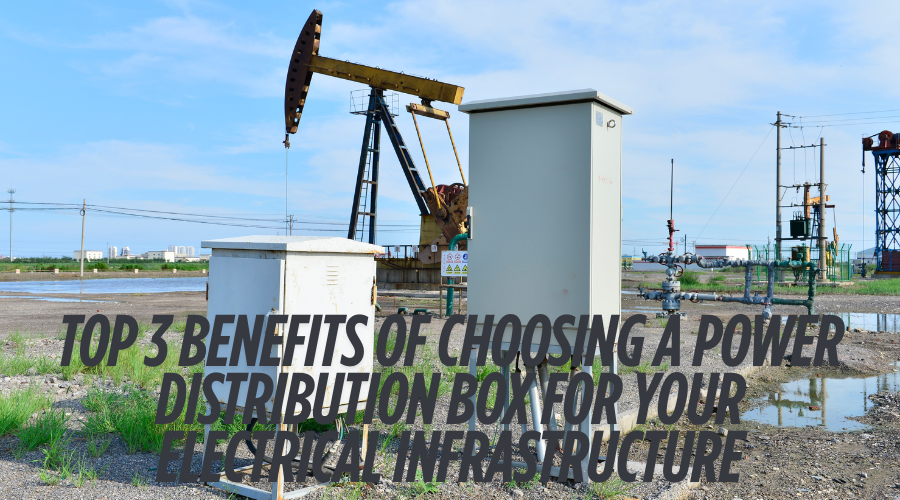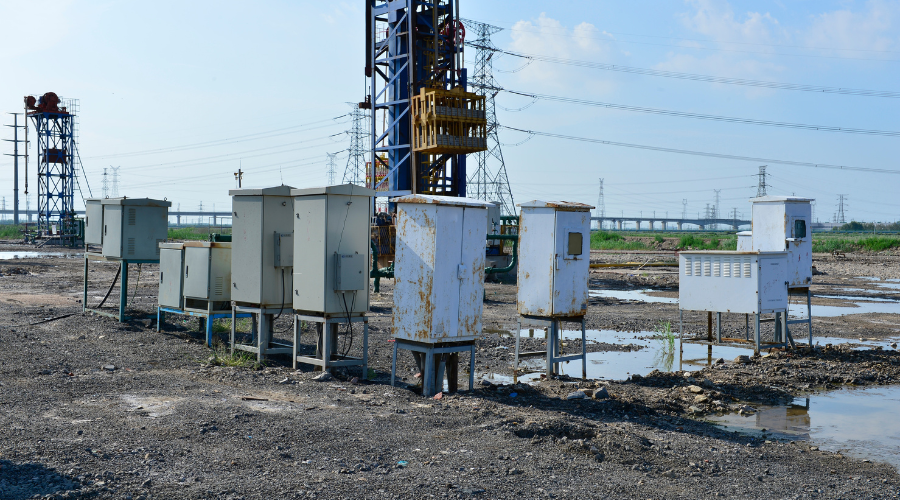


In any residential, commercial, or industrial electrical setup, safety, efficiency, and organization are significant. As power needs become more complicated, managing electrical distribution becomes increasingly difficult. Streamlining the process is greatly helped by the little known Power Distribution Box or PDB.
Also known as a distribution board or panel, a Power Distribution Box connects the main line of power to several different circuits. While it’s tempting not to notice its importance, inserting a PDB in your electrical system can provide several benefits. While it's easy to ignore its significance, integrating a PDB into your electrical infrastructure can bring various benefits. In this blog, we will discuss the three benefits of selecting a power distribution box and how it can improve your overall electrical system.
A power Distribution Box is an enclosure consisting of circuit breakers, fuses and other protective devices. The function of them is to control and distribute electricity to different branch circuits. A PDB distributes power to different electrical setups. Some examples are heavy machinery in a factory, lightening in a commercial building, or home appliances.
They come in numerous sizes and configurations. Now whether that is compact residential models to robust industrial-grade boxes built to handle high voltages and demanding environments, it doesn’t matter.
Now, let’s find out the top 3 advantages that make a power distribution box a necessary investment for any electrical infrastructure.
Electrical setups contain dangerous risks. Short circuits, overloads and faults can cause many dangers. Those dangers can be fires, equipment damage, and even life-threatening damages. A properly designed electrical infrastructure must have a mechanism for catching and eliminating issues before they increase.
Power Distribution Boxes serve as the safety system in your electrical setup. This is how they enhance safety:
Circuit Protection: Every circuit connected to the PDB is generally protected by a circuit breaker or fuse. If an overload or fault happens, the breaker trips. It cuts off power and prevents possible dangers.
Overload Prevention: By equally distributing electrical loads on more than one circuit, a PDB reduces the risk of overloads that can cause wires to overheat and catch fire.
Short Circuit Eliminator: In the case of a short circuit, the affected breaker will trip. It will prevent the fault from spreading and enable other parts of the system to continue functioning.
Safe Maintenance: Power Distribution Boxes mostly have built-in isolators or master switches that let you safely disconnect particular sections of the system. This is for maintenance or upgrades.
In industrial environments where heavy-duty equipment draws essential power, the absence of a proper distribution box could be hazardous. A sudden increase in power could damage a machinery worth a lot of dollars. Or, it could also put labor at risk. With a PDB, faults are caught and eliminated instantly. It ensures both human beings and equipment are safe.
Energy efficiency isn't just an environmental ambition; it's a financial goal. With rising energy costs and increasing dependence on electricity, especially in data centers, factories, and huge commercial buildings, managing energy consumption has never been more complicated.
A Power Distribution Box makes load management easy by providing centralized control over how and where power is delivered. This is how it plays its part in efficiency:
Equal Power Distribution: Loads are shared in equal parts among the circuits according to the PDB method. Because of this balance, circuits won’t be used more than they should, giving others a chance to be more useful.
Reduced Downtime: By clearly organizing circuits and allowing rapid identification of problems, PDBs allow technicians to figure out issues quickly, reducing downtime.
Monitoring and Analytics: Modern PDBs come with built-in monitoring systems that monitor power usage per circuit. This data can be used to find out energy-hungry equipment and optimize usage patterns.
Scalability: As power demands expand, a modular PDB can be grown with new circuits, decreasing the requirement for an entire overhaul.
Improved energy management takes you to lower utility bills and a decreased carbon footprint. In huge facilities, simply avoid energy waste by tracking usage at the circuit level. It can take you to substantial savings over time.

Without a centralized distribution system, wiring can rapidly become problematic, especially in commercial or industrial setups. Noodle-like tangles of wires not only make maintenance chaotic but also increase the possibility of errors. These errors can be connecting the wrong circuit or creating unsafe overlaps.
Power Distribution Boxes bring design to your electrical system. They give you a tidy, labeled, and accessible hub. There, circuits are connected, tracked, and managed.
Centralized Access Point: Technicians and electricians have exact location to access and service electrical circuits. It also saves time and decrease human mistakes.
Labeling and Identification: Advanced PDBs are clearly labeled. They also make it easy to monitor which circuit powers which part of the facility. This clearly is invaluable during improvements, enlargement, or emergency closures.
Compact Streamline: Instead of having more than one small fuse box, cluttered around a facility. A PDB combines everything into a space-saving enclosure.
Professional Look: A tidy and well-organized power infrastructure is a signal of professionalism and high standards, especially in commercial events.
If there is an electrical shutdown or a machine suddenly stops working, technicians can instantly find out the corresponding circuit in the distribution box. As a result, they can fix these problems without having to guess what’s wrong. This style of design cuts down both the time spent maintaining the process and the number of process stoppages.
Though it’s not one of the top 3 main points, these boxes help to maintain compliance with important international and local electrical standards.
Whether you are in any industry, production, construction, or data management, sticking to regulatory standards is complicated. Fixing an accurately rated and certified PDB shows that it remains steady and makes inspection convenient. It also decreases legal liabilities and ensures safety protocols are met.
You should go for an upgrade of PDB in the following conditions:
If you are enlarging your facility or including more electrical equipment.
If your current setup deficits in centralized control and looks disorganized.
If you are facing constant tripped breakers, outages, or even an imbalanced power supply.
If you demand enhanced energy efficiency and monitoring.
If you are improving your system to meet new compliance with safety standards.
A Power Distribution Box does not only serve a technical purpose. Fitting your home with electrical distribution panels results in better security, proper efficiency and helps keep your system organized. Whether you are setting up a managing home renovation, a commercial upgrade, or an industrial power overhaul, integrating a PDB offers clear, measurable advantages.
To recap, the top 3 advantages of using a power distribution box are:
Improved safety and protection for people and equipment.
Efficient energy usage and load management take you to cost savings.
A well-organized infrastructure that eases maintenance and upgrades.
When streamlined and applied appropriately, a power distribution box not only structures your operations but also future-proofs your electrical system for the upcoming years.
Seeking for help selecting the correct Power Distribution Box for your setup? Ask a licensed electrical engineer or contractor to figure out your needs. Also, make sure you get the safest, most efficient troubleshoot for your environment.
What is the Use of Power Distribution Panel?
A distribution panel is the major source of a large set of electrical circuits. Distribution panels work by mixing circuits from many different locations into one central point. This enables you to access the whole electrical grid for your home from a single location.
What is the Main Function of a Distribution Board?
An electrical distribution board, aka a panel board or a breaker panel is an important object in the electrical system of a building. Its function is to distribute electrical power from the main power supply to several circuits and appliances throughout the building.
Why Do We Use Distribution Box?
Like its mentioned in its name, a distribution box is a device that is streamlined to distribute electrical power. It takes the electrical power from the primary power line. Then, it distributes it throughout the house building where it is used.
The advent of smart grids has changed how electric power is produced, distributed, and consumed.
READ FULLHigh Voltage Switchgear It is a
READ FULLTransformer substations are like the core of our electrical systems. They transfer power to our h
READ FULL